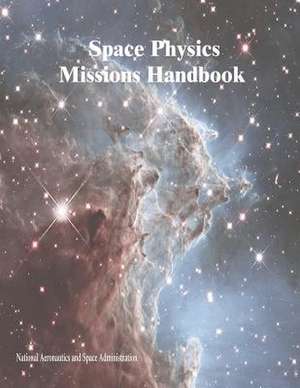Space Physics Missions Handbook
Autor National Aeronautics and Administrationen Limba Engleză Paperback
Preț: 195.49 lei
Nou
Puncte Express: 293
Preț estimativ în valută:
37.41€ • 38.65$ • 31.14£
37.41€ • 38.65$ • 31.14£
Carte disponibilă
Livrare economică 04-18 martie
Preluare comenzi: 021 569.72.76
Specificații
ISBN-13: 9781502989536
ISBN-10: 1502989530
Pagini: 336
Dimensiuni: 216 x 279 x 18 mm
Greutate: 0.78 kg
Editura: CREATESPACE
ISBN-10: 1502989530
Pagini: 336
Dimensiuni: 216 x 279 x 18 mm
Greutate: 0.78 kg
Editura: CREATESPACE
